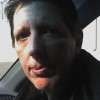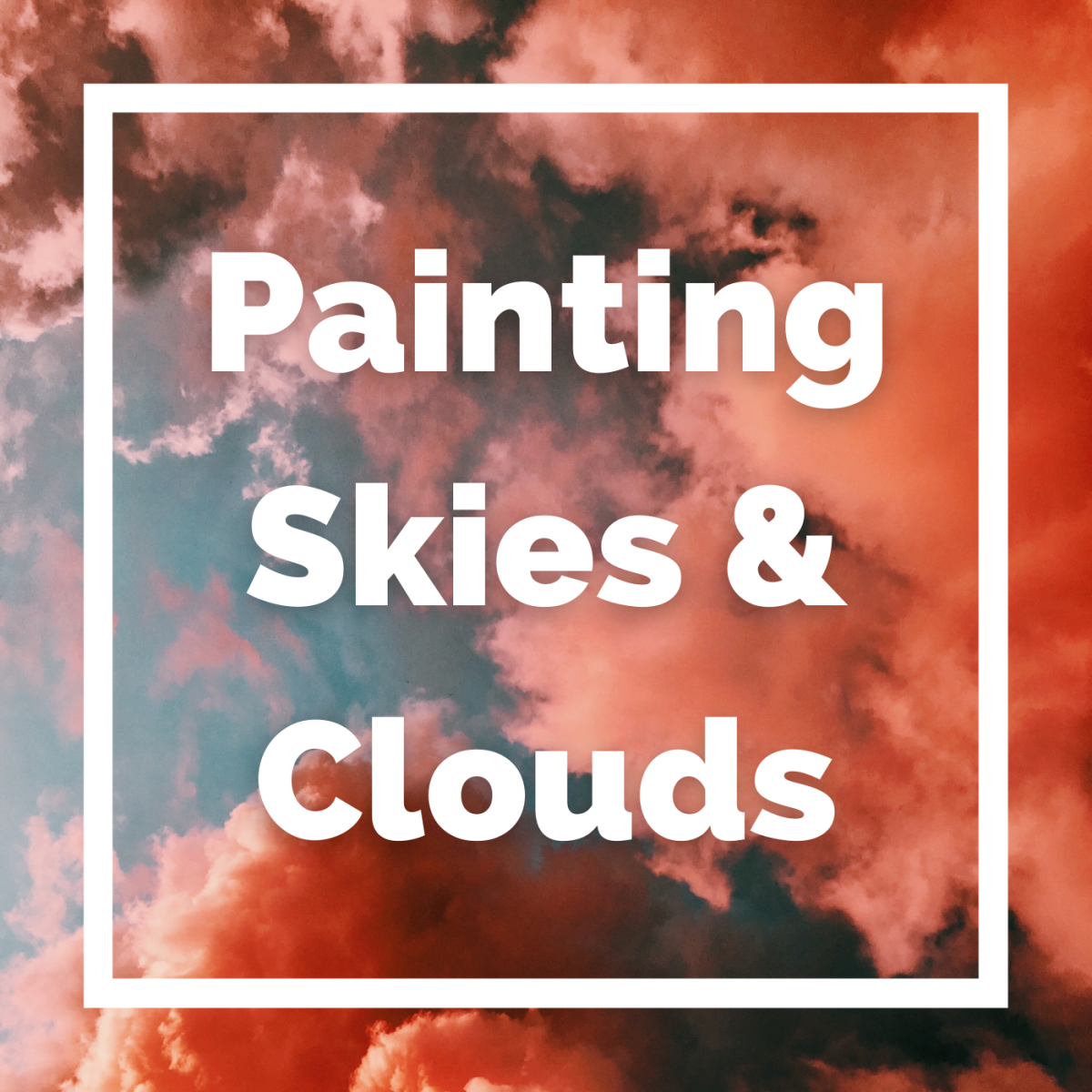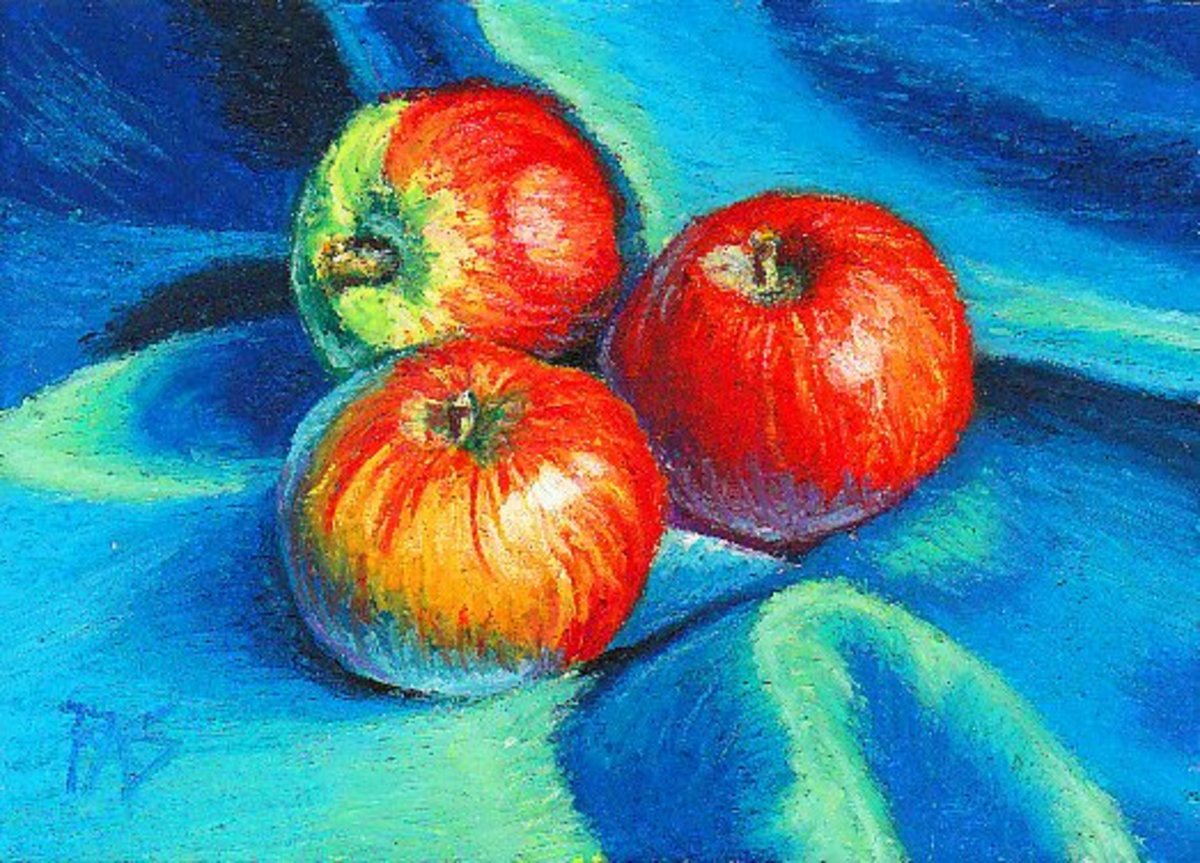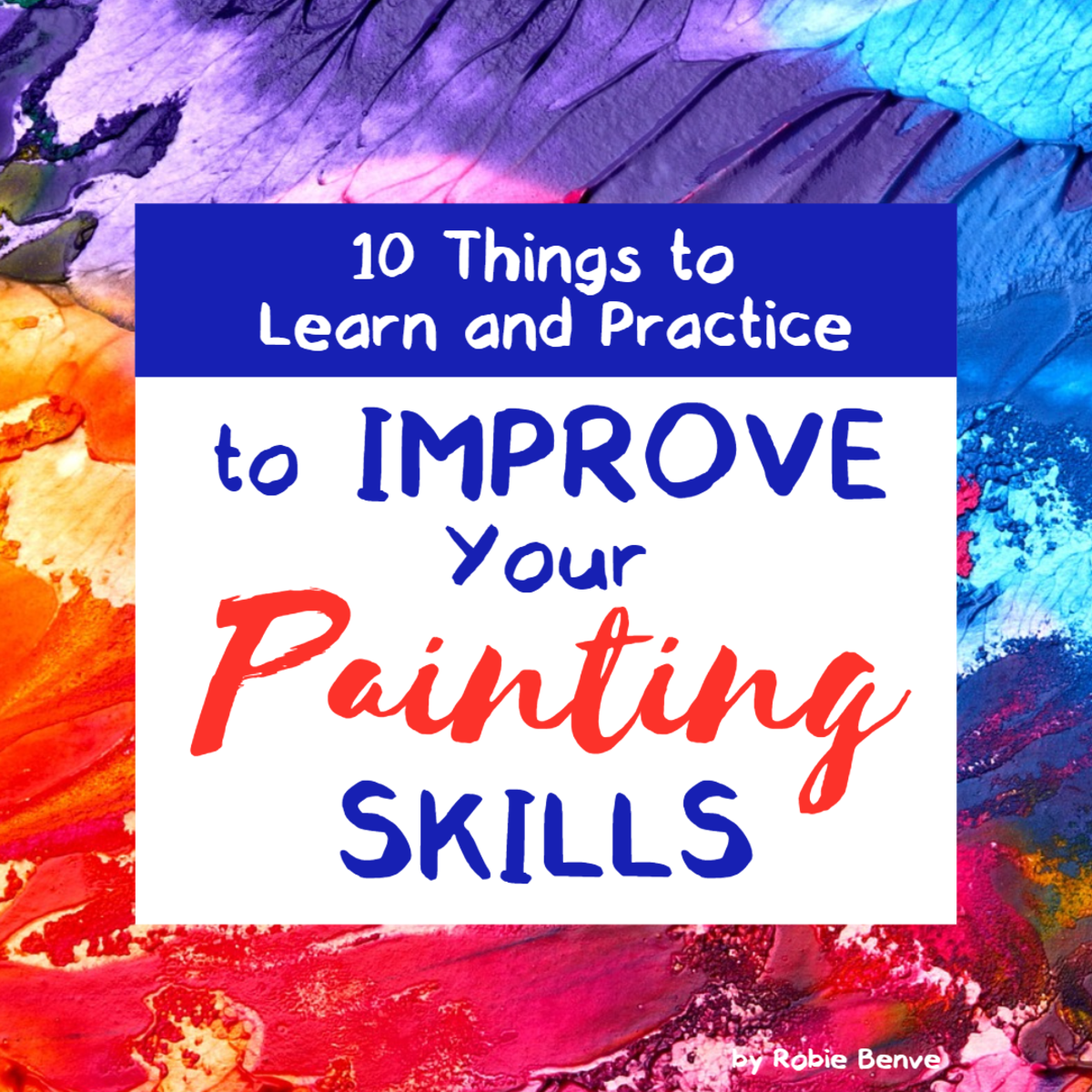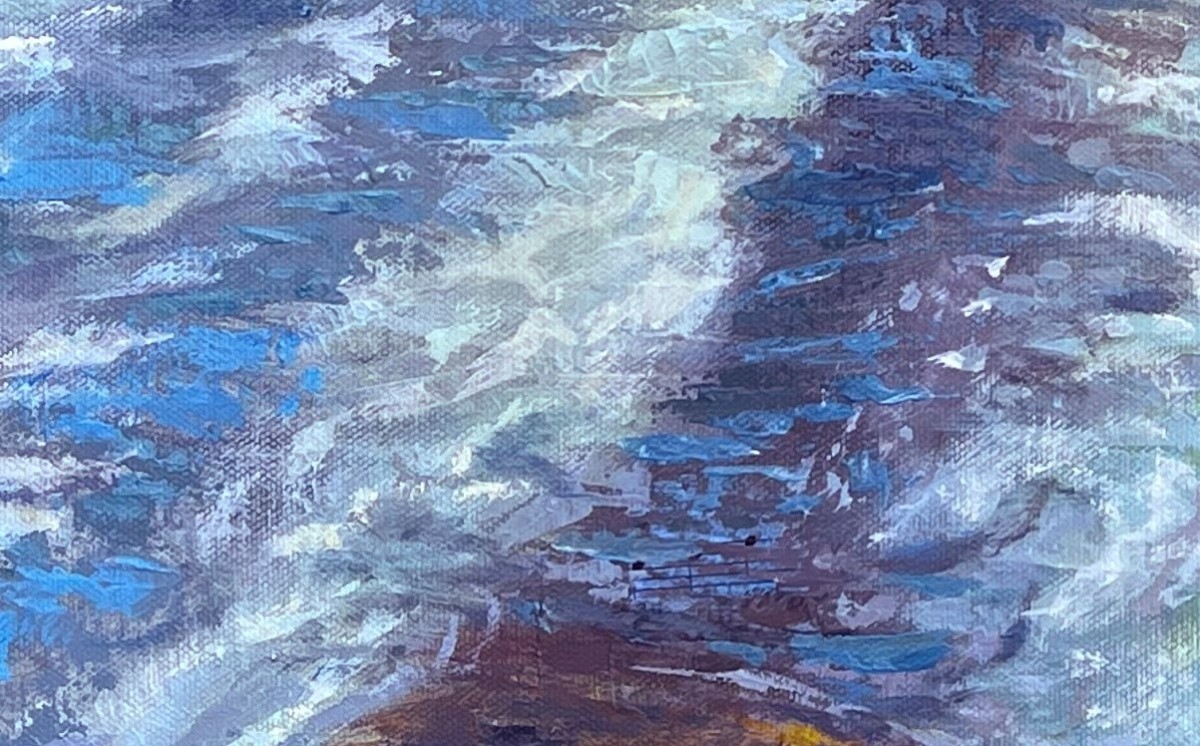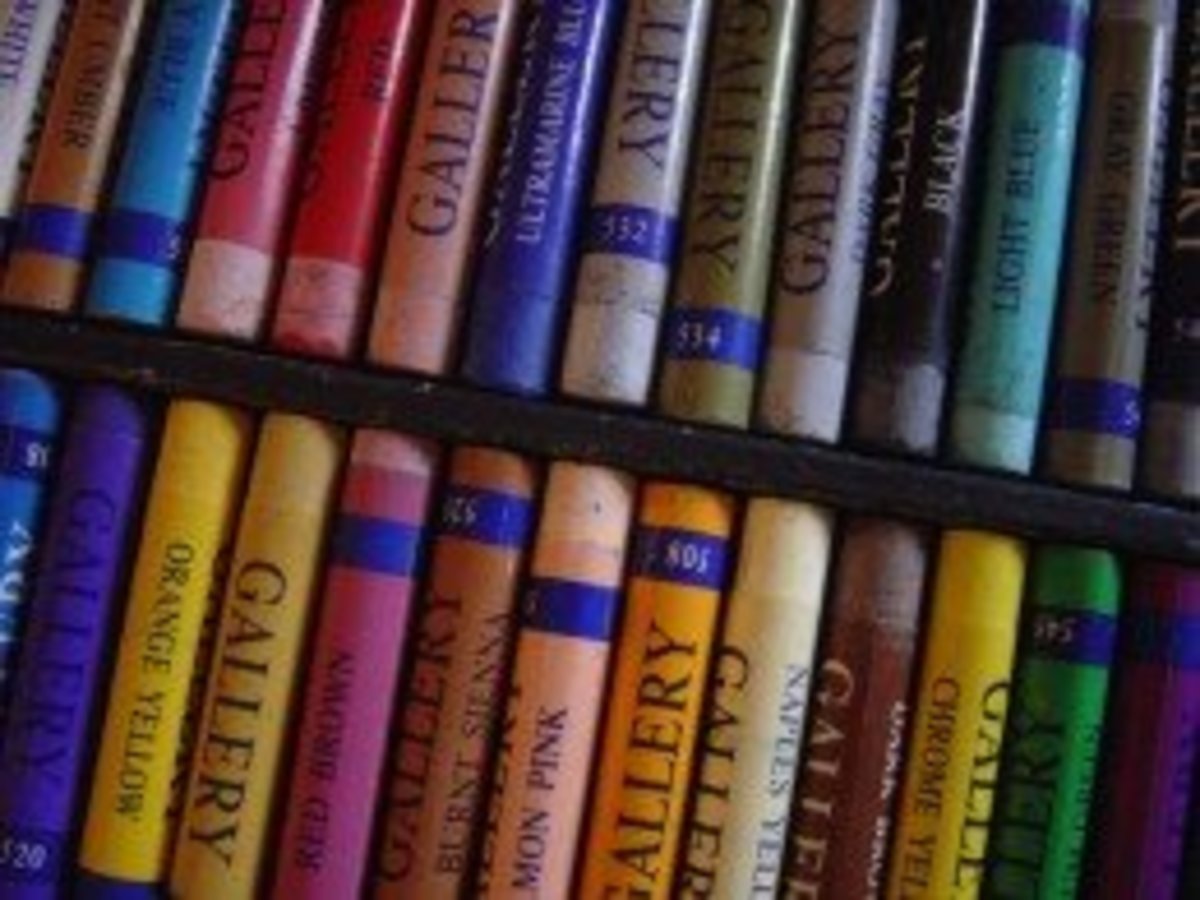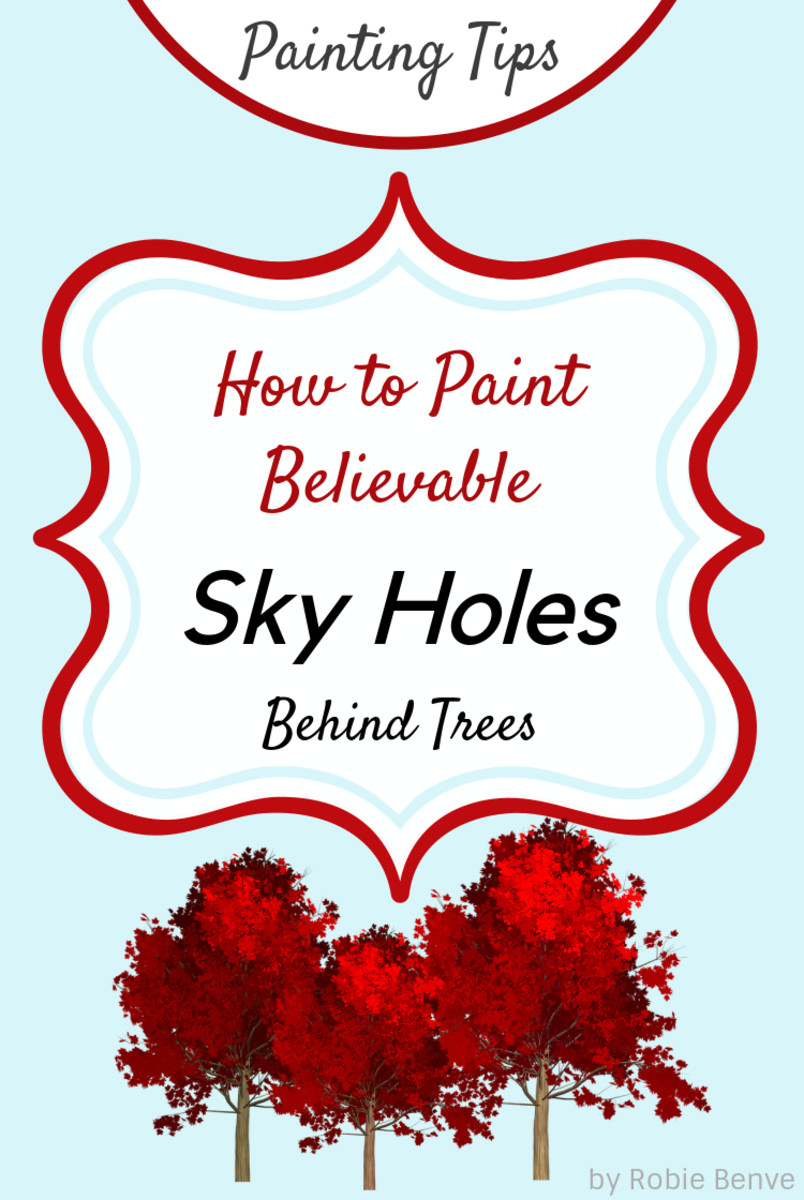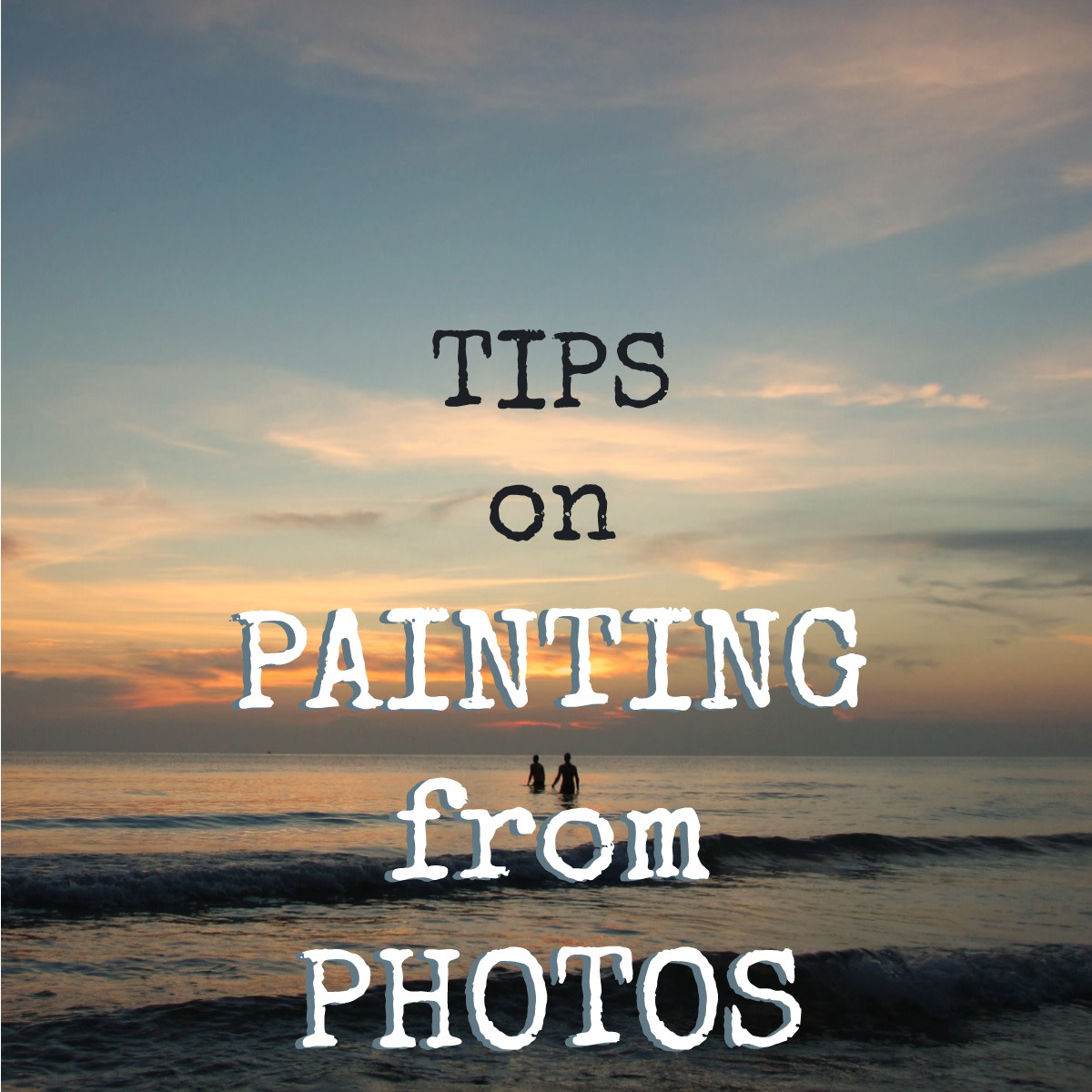How to Create a Painterly Style
Ari On My Knee
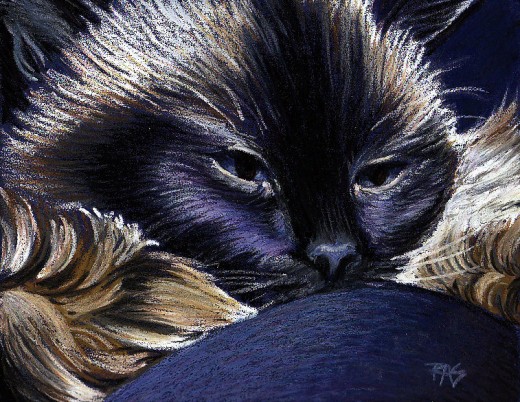
What is a Painterly Style?
Here's the definition of "Painterly" as of the American Heritage dictionary:
1. Of, relating to, or characteristic of a painter; artistic.
2.a. Having qualities unique to the art of painting.
b. Of, relating to, or being a style of painting marked by openness of form, with shapes distinguished by variations of color rather than by outline or contour.
What I always thought it meant, comparing descriptions by art critics of paintings as being "painterly" or having "painterly strokes" was that in something painterly, you don't try to hide the strokes.
Photorealism and some old masters' styles of painting do hide the brush strokes. You see smooth gradual transitions, hard edges that might have been created by a graphics program, details so tiny they might as well be pixels. Realism doesn't tend to be painterly when it's carried to the extreme. Likewise, something that looked like a graphic artist or comics artist with strong clean outlines defining shapes would not be painterly by the dictionary definition -- and doesn't strike people as painterly at a glance either since it looks drawn. It may be beautifully drawn and perfectly accurate ,but it looks more like a good drawing than a good painting. The same artist could eliminate all the outlines and do a painterly rendering of the same subject.
Instead, something like a Van Gogh or Monet would be painterly. It's loose, expressive, the strokes show and something else goes on with the strokes.
They don't cut across the areas of the form. They help to describe it.
I chose the most painterly of my recent works for an example, Ari On My Knee. That dark curve in the foreground is my knee in black sweat pants pulled tight. The grain of the fabric is suggested by the slightly curving strokes that blend back and forth across it in the direction the fabric goes. It's a knit, so it has more vertical linear quality than horizontal. So I elongated the strokes but made them curve a little around the shape of my knee instead of just going side to side across the area.
Patches and swatches of color and value define textures and nothing's outlined. Strokes are not only visible but each mark is more like a brush stroke than something drawn, even though I was using oil pastels, a dry medium. It's quite possible to get painterly effects in pastels or oil pastels, even in colored pencils. It happens when the painting looks more like a painting Even some realist masterpieces, if you look close, have painterly strokes.
The eye that looked so convincingly real from three feet away, if you go close it has a blob of white and a curve of dull pink that's just one stroke over a curve of tan. When the strokes are used to create shape it has a particular painterly look.
Other times, the strokes can be stiff and jagged while still looking painterly. A series of blocky flat-brush strokes that nonetheless suggest a curved apple or dish is a painterly effect. Even dotted pointillism is a painterly effect if it's done with paint and not something like ink stippling.
So how do you cultivate that as an artist? What makes a painting look more like a painting and less like a drawing, a photo or a perfect illusion of reality?
Barn Swallow
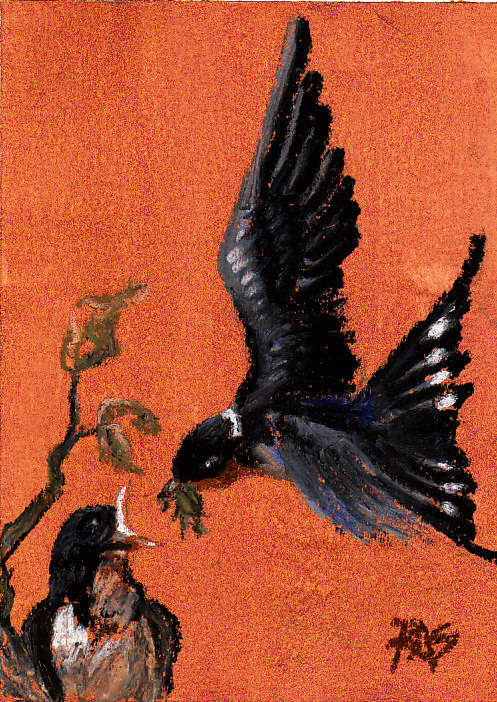
Loosen Up
Whatever your chosen medium, loosen up and stop trying to blend away all the brush strokes. That's a step in the direction of painterly.
Next, don't just use strokes to fill in areas of color. Vary the shape of your marks and strokes. Use different tools and techniques. Try masses of color instead of exact shapes. Soft edges, lost edges, lost and found edges are a painterly technique.
Hard edges are exactly that -- fine sharp edges between color areas. Barn Swallow doesn't have very many because the sanded primer broke the hard edges and made them a bit grainy, but if you look close, the edge where the back of the bird's head meets the flat iridescent orange background is more or less a hard edge.
The edges of the feathers, especially the tips of the flight feathers on the lower wing, are soft edges. They break off into broken color loosely -- but the gesture I used in painting, the moment I started pulling it up and the curve of the mark as I was leaving the paper were as exact as if I'd been trying to draw an outline of the flight pinions. The shading at the edges of the highlights on the wings is soft too. I pushed color into other colors under it and let them blend a bit.
Soft edges are completely blurred. The color transitions on the chest of the baby bird, including where bits of the background show through, are soft edges between different colors. Using soft edges where they work better and hard edges where those work better is a painterly effect.
Lost and Found Edges are fun too. The line of the back of the parent bird's head continues to become the line of his neck and back, but it's lost where it meets the base of his rising far wing. It reappears after the end of the wings to sweep out and become the upper edge of his tail. A curving highlight hints at it but isn't in itself a hard edge. The mind fills in the gap where that highlight ends and the next one begins -- that's a Lost Edge.
That's a painterly effect in itself.
Simplify
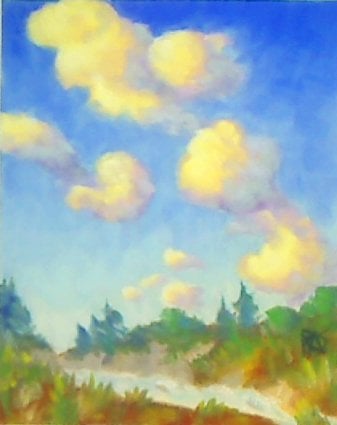
#10 of 30/30

Simplify
One of the greatest qualities in painting is also to be found in poetry: economy of expression. If you can simplify your subject without losing the sense of it, you can bring greater richness to the painting as a whole. In Clouds, I used various light colored tints to describe the rounded forms of puffy warm summer clouds late in the afternoon -- late afternoon sun turns more golden and the shadows become richer and more violet. The value changes in those clouds are very slight, the color changes accent them and make the forms much more rounded.
I could have made the sky a lot more complex with more clouds overlapping each other, but this arrangement worked in terms of composition. I painted intuitively from imagination and added some simplified trees and landscape elements at the bottom. I simplified everything except the clouds because they are the main point of the painting, not the stuff down at the bottom. That's there more to make it a complete painting.
Pan Pastels behave a lot like oil paints for wet in wet. Colors blend into the colors under them and distinct strokes can be laid over other colors for contrast. I used red and green as a complementary pair on the land, then violet and yellow in the clouds, with blue and golden orange uniting them. The gold down in the grass and foliage and the blue reflection of the sky on the river helped tie it all together. By using the entire spectrum a little brighter than life, I succeeded in giving this painting a sense of heightened color, a more magical feeling than everyday life.
Colourist painters can carry this tendency to an extreme, to where every subject seems to have been filtered through a prism -- yet look again and it really is its true colors.
It's natural for beginners and new artists to want to do a lot of detail. Observing and sketching details accurately is some of what anyone longs for when trying to learn to paint. Yet the more painterly artists don't start with the details. They start with bold simple masses and build on those with color and value, letting the details mostly wind up suggested or implied -- and adding fewer important key details at the very last stage that give an illusion that everything in the painting is that detailed.
It takes time to learn to develop a painterly style. Read good art instruction books. Visit museums and galleries. Join discussion groups online at places like http://www.wetcanvas.com where free classes and friendly supportive critique often by professionals will help your art progress in a painterly direction.
Some good books to start with:
Carlson's Guide to Landscape Painting by John F.Carlson is out of print, but used copies still turn up regularly on Amazon. It's quite old, unfortunately it has no color illustrations because the technology when it was first printed didn't support color plates well but there's a beautiful color jacket or cover depending on whether you get it hardback or paperback to show what he describes when he talks about color shifts. Value decisions are enhanced by studying the numerous black and white examples of his landscapes.
Capturing Radiant Light & Color in Oils and Soft Pastels by Susan Sarback is still in print and wonderful for studying the Colourist style of painting. Follow her four-stage method of painting using brilliant spectrum colors and no neutrals or black and you will definitely develop a painterly style. This book teaches Full-Color Seeing and will help you gain a new understanding of how to describe shape with color as much as with value.
The Pastel Book by Bill Creevy focuses on soft pastels and oil pastels. It teaches many principles of painting that could easily be applied in other mediums and has numerous examples of different styles and techniques available to pastelists in either medium.
Finally, consider using soft pastels, oil pastels and charcoal rather than graphite and colored pencil for sketches. Sometimes a new medium will help you gain a fresh approach and work larger, looser and wilder. Let yourself go. Paint from imagination and memory sometimes even if the results aren't as perfect as when you have a good photo reference. Paint from life as often as you can, no matter what's in front of you.
In time you will not only develop a painterly style but an original, unique style composed of everything you ever loved and everything you like best. Your favorite colors will wind up getting used more often. Your brush strokes will begin to look as distinctly different from other artists' as Monet's do from Van Gogh's. Your palette may evolve into something specific as you abandon colors that don't give the effects you want in favor of those you do.
Literal accuracy isn't the most important thing in painting. Developing a painterly style is more like telling a story than reporting the news. It carries emotion, theme, meaning and all sorts of intangible qualities that make it richer than life and truer than literal facts. Have fun! The more you paint, the more fun it gets exploring what your favorite mediums can do... and expressing yourself in a way that only you can.
